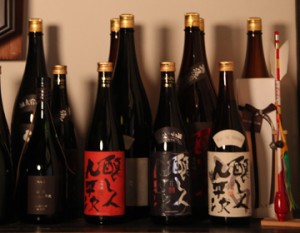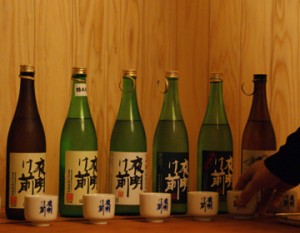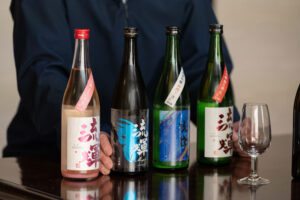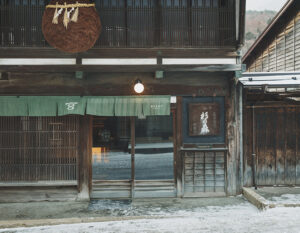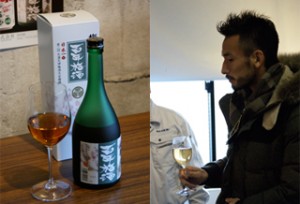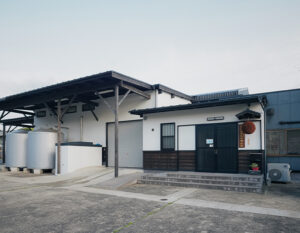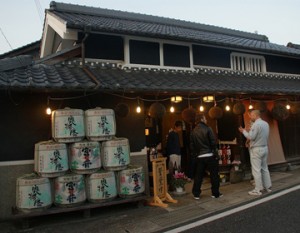Asahi Shuzo Co., Ltd. has ignited the sake boom not only in Japan but also overseas. The company is best known for its famous sake Ottersai. Ottersai” has made great strides in unconventional ways as a sake brewer and continues to be loved both in Japan and abroad, and it seems to have reached its zenith.
Sake Brewing: Turning Pins into Opportunities
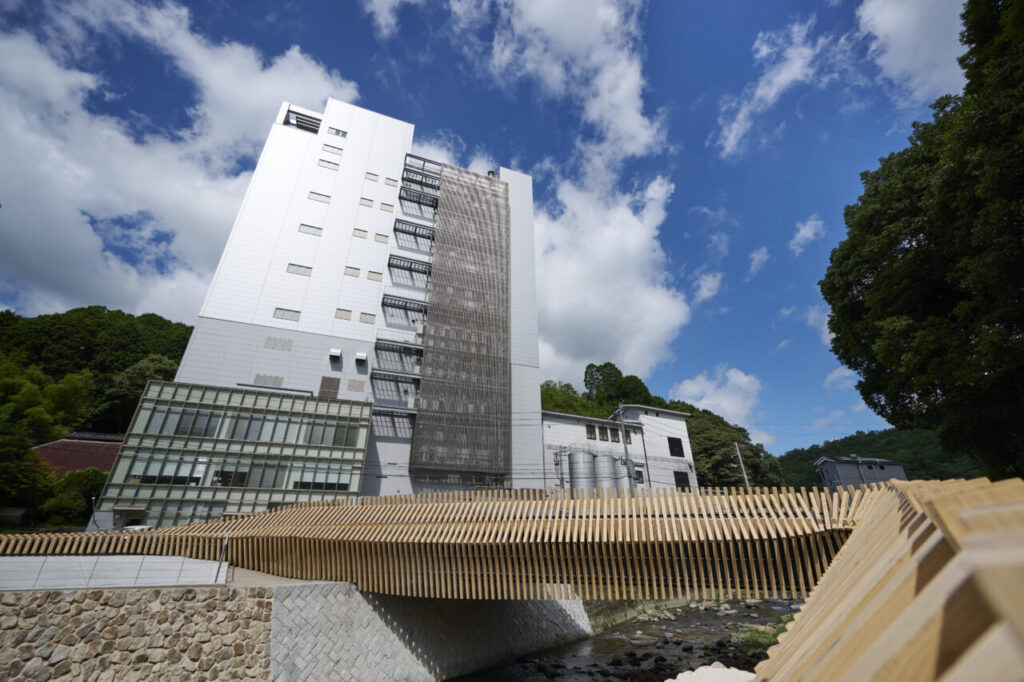
Iwakuni City is located in the eastern part of Yamaguchi Prefecture. As you drive through the mountains on Prefectural Route 5, a 12-story building suddenly appears. This modern brewery, unusual for a sake brewery, was established in 1770 and has a history of more than 200 years . It is here that the world-famous sake Ottersai is made.
Hiroshi Sakurai, the current chairman and creator of Otters, worked for a major sake brewer after graduating from university. He then joined Asahi Sake Brewery, but due to differences of opinion with his predecessor, he left the company at one point to run a stone business.
In 1984. However, Japan was in the midst of an unprecedented shochu boom, and sales of sake plummeted. In this era, sake was sold cheaply and consumed in large quantities. The Asahi Fuji, the signature product at the time, was not selling well, and the Asahi Shuzo’s business was declining year by year. Despite efforts to do something about it, local wholesalers would not take the company seriously.
However, Mr. Sakurai, faced with this major crisis, began to sort out the essential problems of sake brewing, one by one.
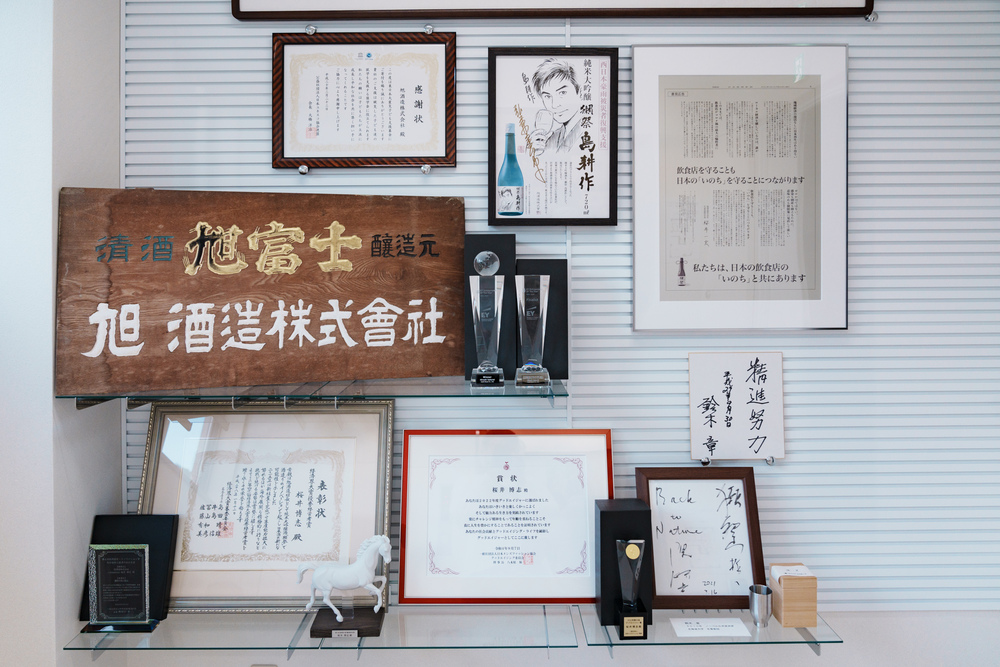
The Birth of “Otters” – Truly Delicious Sake
The company’s strategy for survival was to create “truly delicious sake. A sake brewery with no name recognition in rural Yamaguchi had no chance if it tried to compete with the thin profit margins that were the mainstream in the sake industry at the time. The sake brewery chose “Junmai Daiginjo” because of its high unit price and appealing value.
Sake is classified according to the ingredients and the ratio of polished rice. Among these, junmai daiginjo is made from only rice, rice malt, and water.
It is made by fermenting rice with a milling ratio of 50% or less for a long period of time at a low temperature, and is characterized by the original flavor and richness of the rice and a sweet, fruity aroma known as ginjo kojo. The low-temperature, slow maturation process is costly and time-consuming, resulting in a higher price for sake. The aim is to raise the value of the product by producing a valuable and delicious sake.
However, no matter how good the sake is, people will not pick it up if it is still called Asahi Fuji. A new brand was needed. The name of the place where the brewery is located, Osogoe, comes from an old legend that an otter crossed the mountain and came here.
There was a Chinese legend called “ottersai,” which originated from the unique behavior of otters in laying out their catch on the riverbanks, which looked like enshrining (=sacrificing) offerings to the gods and Buddha. We decided to name the brewery “Otters” after one of the haiku names of Masaoka Shiki, who revolutionized the literary world during the Meiji period, “Ottersho-ya Shojin” (Ottersho-ya: master calligrapher), as it was the perfect name for the sake we were trying to brew innovatively from deep in these mountains.
The Struggle to Create Truly Delicious Sake
However, although he had worked for a major sake brewer after graduating, he was a complete novice in the art of sake brewing. Therefore, he tried everything he could, including visiting breweries with good reputations and imitating ginjo-shu, which is said to be very tasty. The toji brewed sake based on the information Mr. Sakurai had gathered, quantified everything, and repeated trial and error based on the data. A university professor even scolded him, saying that mass-producing junmai daiginjo was an affront to the toji’s feelings, but there is no greater strength than experience.
Finally, in 1990, after six years of work, they were able to sell junmai daiginjo-shu with rice polishing ratios of 50% and 45%. Until the completion of the brewery, “we had to endure the hardships of crawling on the ground,” Mr. Sakurai recalls. Mr. Sakurai recalls his efforts.
From the beginning of the development, he had decided to focus on the Tokyo market. It was obvious to him that sales would taper off in the small local market. Mr. Sakurai himself actively engaged in sales activities by visiting liquor stores and restaurants. At the time of the launch, the bubble economy had just burst, and izakayas (Japanese-style pubs) were beginning to replace closed bars and other establishments in prime areas of Ginza. We were lucky that many of them favored high-priced sake such as Otters. As word of Otters gradually spread among Yamaguchi Prefecture residents in Tokyo, more and more restaurants began to carry the brand, and it got off to a good start.
The Challenge of Making an Industry-Leading Junmai Daiginjo
The sake industry has long delivered products to consumers such as restaurants through wholesalers, and the relationship with wholesalers has greatly influenced the volume of sales. The reality was that the sake that sold well was not necessarily the sake that consumers were looking for.
However, if things continue as they are, the sake industry will continue to decline. Mr. Sakurai, who was rethinking the old system and thinking of ways to deliver truly delicious sake to as many people as possible, decided to start direct dealings with only those sake retailers who would sell the sake they made in proper conditions. He also spared no pains to have his employees visit sales outlets across the country to check the sales environment. They saw with their own eyes and experienced firsthand what the market was like.
Good sake can be found anywhere in Japan. In order to strongly emphasize their own selling point, the next challenge was to develop a junmai daiginjo called “Otter Festival Polishing 20% to 30%,” which boasts an industry-leading rice polishing rate of 23%.
Thorough labor and cost
By using brown rice with 77% of the surface removed, it is possible to express a clear flavor with no cloying taste and a profoundly delicious taste. However, this was not an easy task. If the rice is too polished, it tastes uninteresting.
For this reason, we repeated verification in every detail, including work that is more reproducible using machines and delicate work that can only be done by human hands. We have thoroughly gone through and improved the efficiency, the leading lines, and the subtle changes.
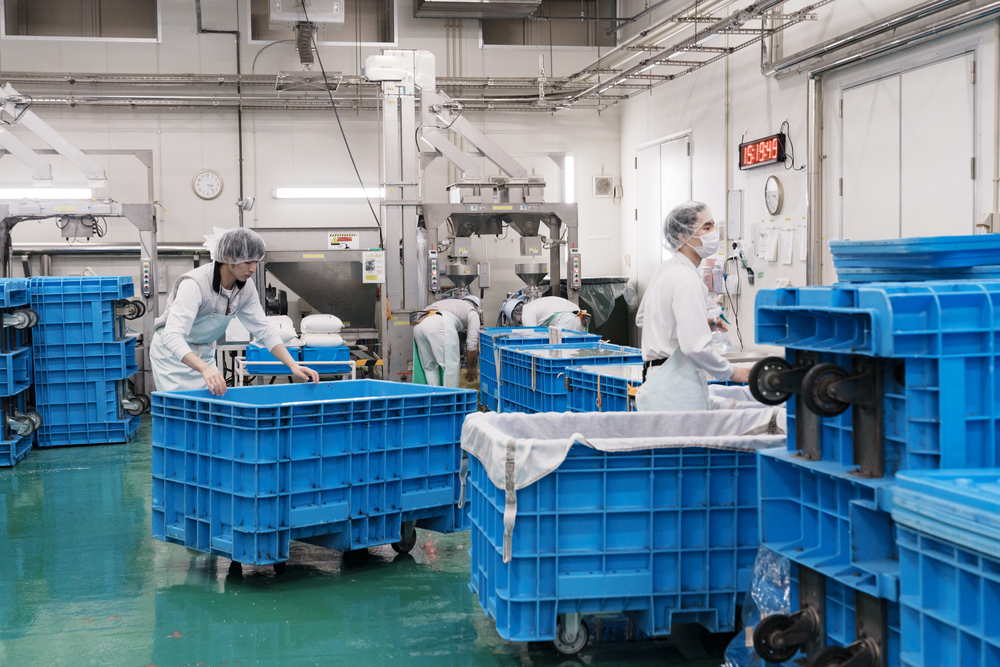
In addition, all rice used is Yamada-Nishiki.
Yamada-Nishiki is characterized by its low fat and protein content, and its large grain size, which makes it easy to polish. It is also highly water absorbent, which makes it easy to produce good koji, and is so well-balanced that it is considered the king of sake rice, making it easy to produce sake that reflects the brewer’s intentions.
However, even the same rice can absorb water differently depending on the field from which it was harvested, so the rice is washed by hand to accommodate the subtle differences.
In addition, when moving steamed rice to the floor, the rice is carried by hand to prevent moisture imbalance and changes in rice quality.
Since koji production is said to affect more than 50% of sake brewing, the condition of the koji is analyzed by machine every day and fine adjustments are made by hand.
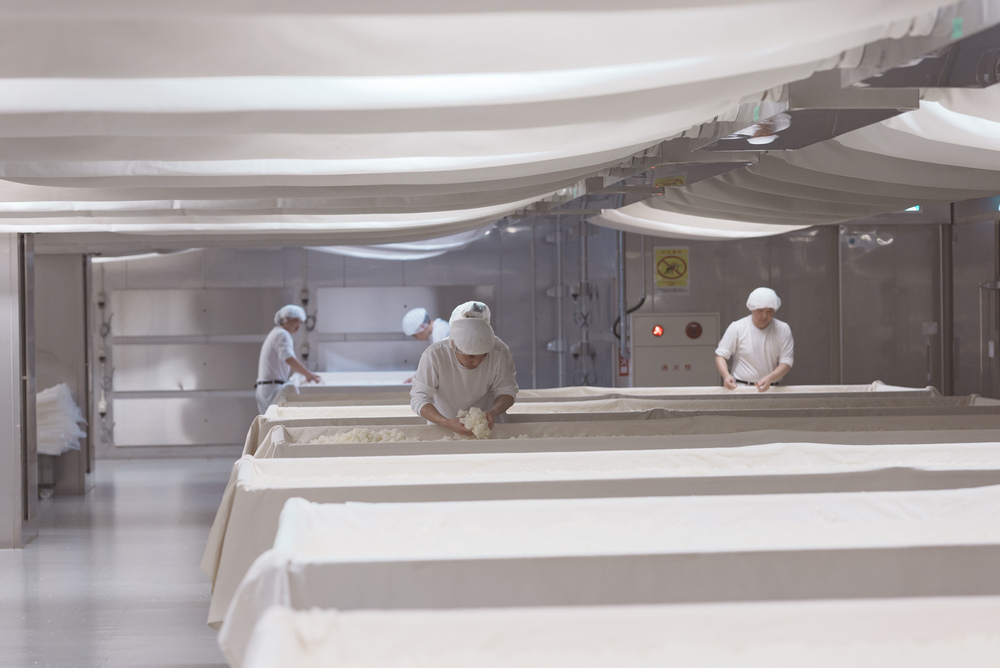
Otters Polishing and Twenty-Three Percent Polishing” is the result of a balance between man and machine.
The one and only junmai daiginjo “Ottersai Polished 20% Sanbu” was created by balancing human experience and intuition with data and machines, and has become Asahi Shuzo’s golden signature.
The unique junmai daiginjo “Otter Festival: Polishing 20% Sanbun” became Asahi Shuzo’s gold standard. With its fruity flavor and lack of cloying taste, it was accepted by young people and women who had never drunk sake before, and the company’s business grew dramatically. The company’s pursuit of “making sake that we think tastes good” was accepted by the market.
The company did not do any flashy publicity for the Otters brand, but rather valued its origins. This approach to sake brewing slowly became known by word of mouth, and as the media began to pick up on it, the reputation of the company grew, and the brand became extremely well known and powerful.
The Farewell to the Toji System Behind the Success of Sake Brewing
Sake brewing is generally a seasonal job, and in most cases, brewers come to work only during the brewing season and return to their main jobs, such as farming, after the brewing season is over. In some cases, the brewers could not participate in the brewing process until they had finished their main job, which was not very flexible and sometimes hindered the freedom of the brewers to make sake. The aging of the workforce has also become an issue, and in order to pass on the Toji’s skills, which belong to the individual, it is necessary to pass the baton to younger, more talented people.
However, stable year-round employment is a prerequisite for this. Mr. Sakurai decided to enter the microbrewery business in 1999, believing that he could secure stable employment for his staff if there were jobs available during the summer months. He thought that if he could combine the busy summer production of microbreweries with the winter production of sake, he would be able to create year-round employment and recruit young people for the manufacturing sector.
However, the business failed after only three months and they were saddled with a large amount of debt. The veteran toji, who had heard rumors of the brewery’s financial difficulties, left the brewery that year.
Forced to make sake on his own, Mr. Sakurai decided to take on the role of toji himself and start producing junmai daiginjo with five employees taking over the brewery’s brewery staff. Fortunately, the trend of the times was toward sake brewing that did not rely on a toji, and Mr. Sakurai began to compile a manual based on the data he had accumulated. Once he started brewing sake without a toji based on the manual, it became possible for him to have unprecedented freedom of thought, such as “I would like to make this kind of sake. This led Mr. Sakurai to change to four-season brewing so that sake could be made year-round. As a result, he is now able to employ people year-round, and is hiring younger generations.
What is truly delicious sake?
The brewery had previously exceeded its production capacity, so it took 10 years to build a rice mill, a new warehouse, a new refrigerator, and a second warehouse. 2015 saw the completion of the 12-story main warehouse.
The company wanted to build along the bushes, but it was difficult to secure a large enough flat area to build a brewery, so it had no choice but to extend vertically. However, this increased production efficiency, and production capacity exceeded 4 million bottles per square meter. Asahi Sake Brewery, once one of the lowest-selling breweries in its hometown of Iwakuni, was ranked in the top 10 sake breweries in terms of sales in FY2016, becoming a major sake brewer in both name and reality.
Asahi Sake Brewery currently employs more than 170 production staff out of a total of 240 employees. The average age of the employees is a surprising 28 years old. The young power comes not only from the local area, but also from all over the country. Of course, they are conscious of maintaining a balance by bringing in experienced workers for positions where experience is of the essence.
Mr. Sakurai smiles as he explains that the system was created to provide a professional environment for sake brewers to gain experience, a system that was not bound by the old rules, but was created through the clumsy efforts of the brewery.

Everyone starts out as an amateur. He says that everything in this world is subject to change, and he is still in the process of evolving so that he can pursue and provide delicious food even as things change.
Things that should be changed because they are important
Mr. Sakurai says that he thinks in this way. If we want to carry on the traditional methods and culture that have been handed down from generation to generation, we should not just do it out of inertia, without considering the reasons for doing so. Because they are important, they must evolve.
With this in mind, he started the “Yamada Nishiki Beyond the Best Project,” a contest held for Yamada Nishiki farmers throughout Japan under contract with Asahi Shuzo in the hope that it will encourage sake rice farmers to dream. The contest is titled “Challenge to surpass the Yamada-Nishiki of the past.
The winner will receive 500,000 yen per bale, 25 times the market price. 50 bales (3 tons) or more is the minimum entry unit, so the actual prize money will be more than 25 million yen.
The rice that wins the contest will be used to make Otters’ top-quality sake. This contest has led to the production of “Yamada Nishiki for Otters” in regions that have not actively produced Yamada Nishiki in the past. This has created a new wind in the environment surrounding Yamada-Nishiki and has created a virtuous cycle that enables good sake brewing.
Toward World Recognition of Japanese Sake
The Challenge of Local Production in New York
A bottle of Romanée Conti, a well-known luxury wine, costs more than 1 million yen. Sake is no less valuable. However, in order to have its value recognized, it was necessary to let the industry as a whole and consumers alike know that there is a climate in which sake is appreciated even if the price is high. Mr. Sakurai believed that a shortcut to this end would be to have Otters recognized in overseas markets.
In the early 2000s, when Otters was just getting off the ground, Mr. Sakurai heard that there were many repeat customers of Otters at Japanese restaurants in New York. Anticipating the declining population in Japan, he began to expand the market overseas around 2003. Starting in Taiwan and steadily expanding to the U.S. and France, Otter’s name recognition continued to climb the stairs to world-class status, as he had hoped.
In 2018, the company also collaborated with French master Joel Robuchon in Paris. By 2022, Otters will be shipped to approximately 30 countries, and the world will continue to recognize its legitimate value as “delicious sake.
The next challenge is local production in the United States. In 2019, the company will begin construction of a sake brewery in New York City, with the goal of producing sake locally and not for export so that people can drink truly delicious sake. They plan to have a production capacity of 7,000 koku (700,000 bottles).
They want to create a system that can instantly grasp and respond to market changes and demands that can only be sensed when they are in the United States.

Thoughts on the Future
I am a runner who is three laps behind. I have been running straight and earnestly, clumsily. Success is the luck of the hour, but I think it is necessary to choose something that has a high probability of success. I want to continue to make delicious sake that involves the world and makes people happy,” Sakurai says.
My dream is to make sake on the moon. His carefree smile has a mysterious power to convince us that it is not only the taste of sake, but also his unconventional passion for sake brewing that has attracted so many people.




